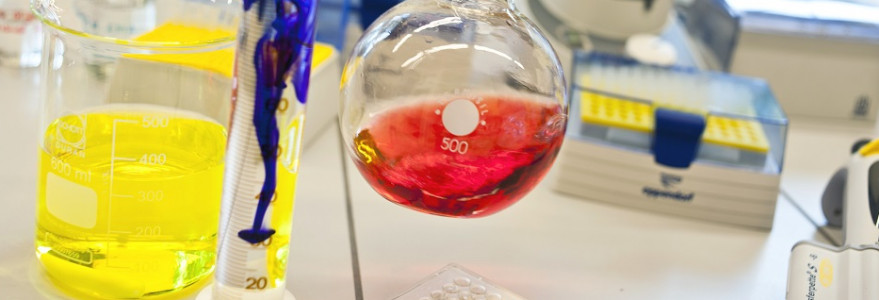Oxidation state usually takes the values from –4 up to +8, and even +9 in one case. Scientists from Centre of New Technologies have done advanced quatum-mechanical calculations and on this ground, they propose several simple molecules, where oxidation state is +9, and even could reach the value of +10.
Oxidation state is a number assigned to the certain atom in a chemical compound describing the hypothetical excess or lack of electrons comparing with atoms present in the pure element form. Assigning different oxidation states to the atoms simplifies classification of vast number of chemical compounds containing the same chemical element. For example, in the water molecule H2O we assign an oxidation number of +1 to hydrogen, while –2 to oxygen. The hydrogen peroxide is also known, differing both in chemical formula (H2O2) as well as in physical and chemical properties. In this case the oxidation number of hydrogen is not changed, but the oxygen’s is now –1.
Until recently it was thought that maximum oxidation number is +8. But in 2014 scientists observed the cation of iridium(IX) tetroxide, IrO4+, where oxidation number of +9 is assigned to the iridium atom. Prior to the experiment however, this result was theoretically predicted employing computational methods of quantum chemistry.
For many years team led by Professor Wojciech Grochala in the UW Centre of New Technologies has researched unusually high oxidation states, especially of silver and light noble gases. This time researchers decided to explore the problem of the highest oxidation state possible as far as all elements are considered. Since electrons in atom surround the nucleus in a “layered” manner – i.e. they form electronic shells, scientists searched for the extreme oxidation states corresponding to complete removal of electrons out of the most external shell (the so called valence shell).
“We were encouraged i.a. by theoretical results published by American team of Prof. Truhlar. Their outcomes were indicating on a possible stabilization of PtO42+ dication. Although the next paper from 2018 utilizing better methods was suggesting the very short “lifetime” of such cation, the primary findings were our inspiration,” says Dr. Łukasz Wolański, the member of the Warsaw team.
The chemical elements chosen for CeNT team had more than 8 valence electrons, so they could possibly “give away” all of these electrons. Then, these elements were used as positive central atoms surrounded by negative ions, resulting in models of small molecules. Only few negative ions (here: 4) could fit around positive central ion with formally high oxidation state, due to small radius of such positively charged ion.
“Due to limitation of the number of negative ions we decided to use triply charged nitride ion (–3). It provides better compensation of high positive charge of central ion than the previously used doubly charged oxide (–2) and singly charged fluoride (–1) ions. Our primary concern was the loss of electrons by nitride ligand after bonding with highly oxidizing transition metal cations. Despite this obstacle, we showed that proposed molecules could have longer lifetime that the ones speculated in the literature,” recalls Prof. Paweł Szarek.
“Outcomes of our calculations indicate that oxynitride compounds of iridium and rhodium may exhibit nineth, while platinum even tenth oxidation state. In contrary to IrO4+ or PtO42+, some of them are electrically neutral, thus attempts of isolating them in greater amount could be carried out,” clarifies Mateusz Domański, PhD candidate in the UW Centre of New Technologies.
“Our strategy is to count atoms’ electrons on fingers; in the planning of such research it is enough to learn how to count to ten,” says wittily Prof. Wojciech Grochala, adding: “We eagerly look forward for the experiments that could confirm our predictions”.
The research was financially supported by Polish National Science Centre (NCN). The results were published in “Chemical Communications” (2020), “Chemistry — A European Journal” (2019), and ”Journal of Molecular Modelling” (2019). It was also honoured with a cover in ”Chemistry — A European Journal”.



